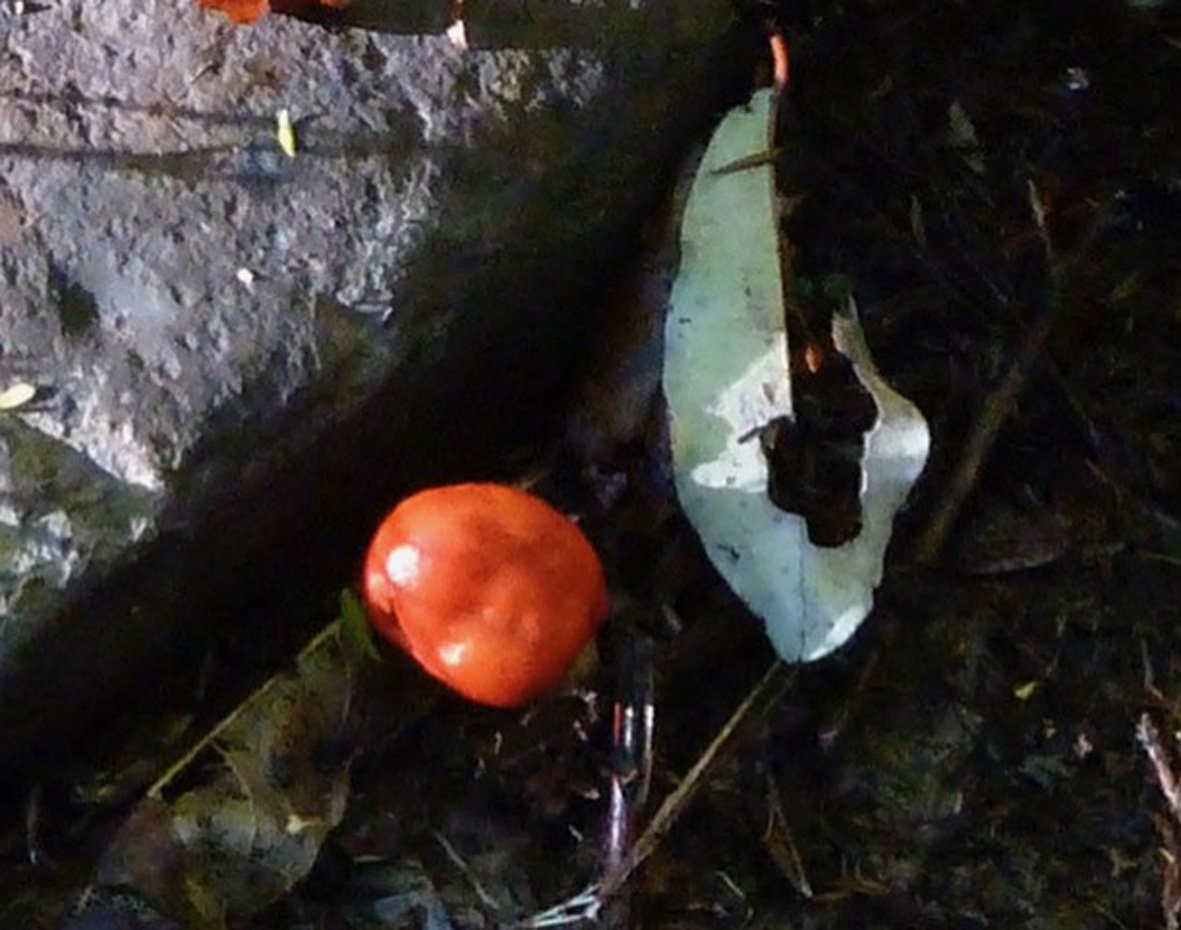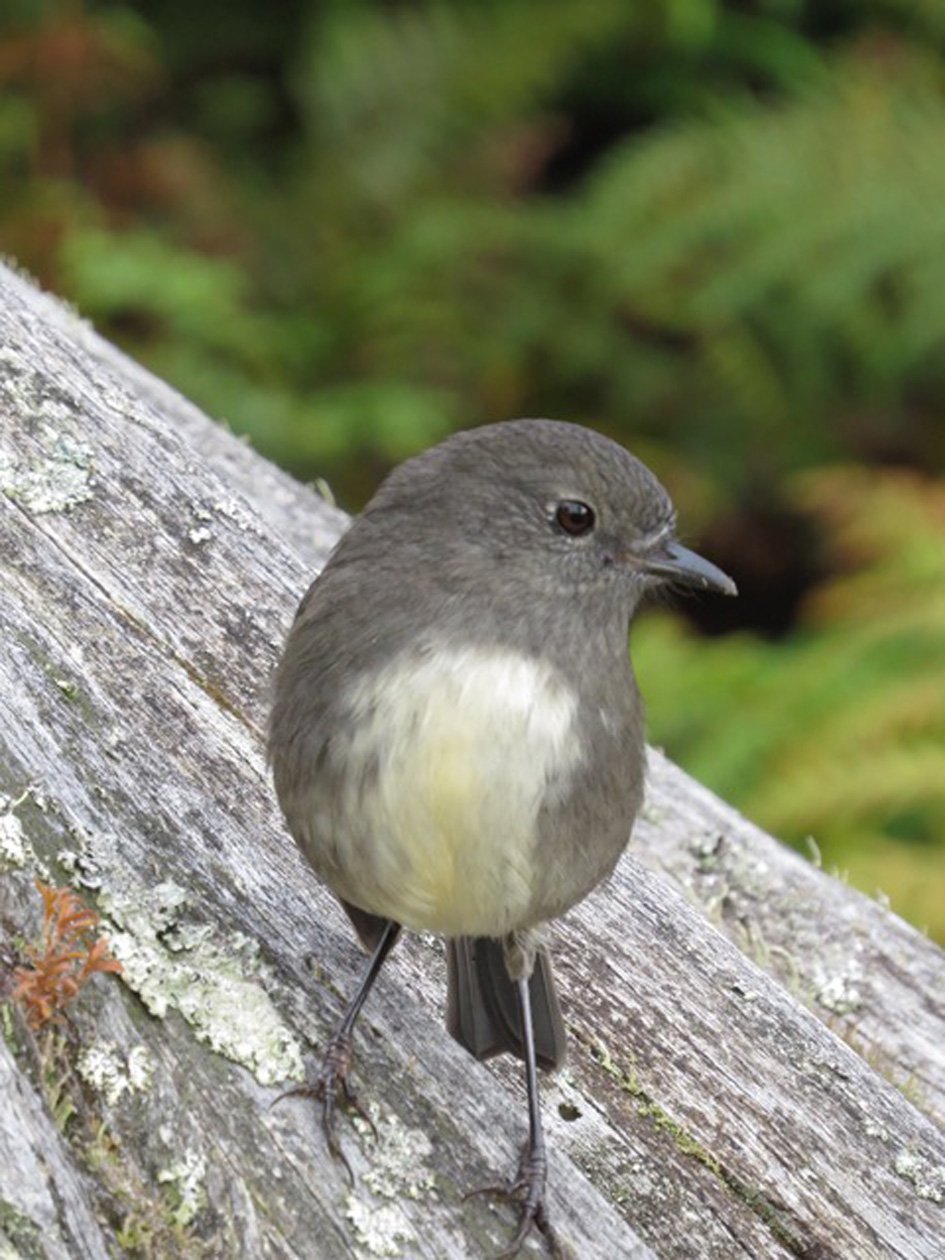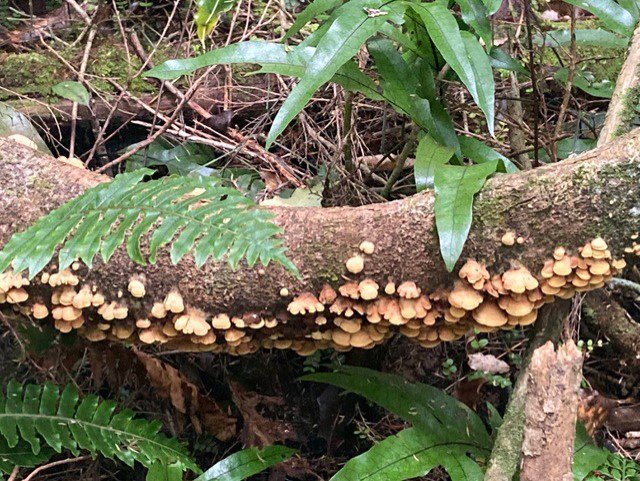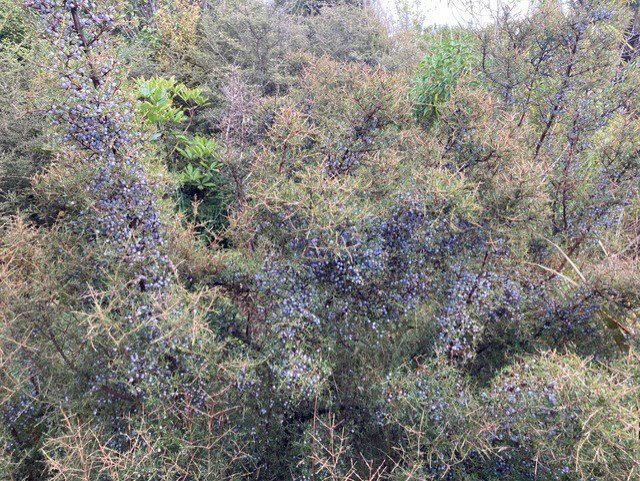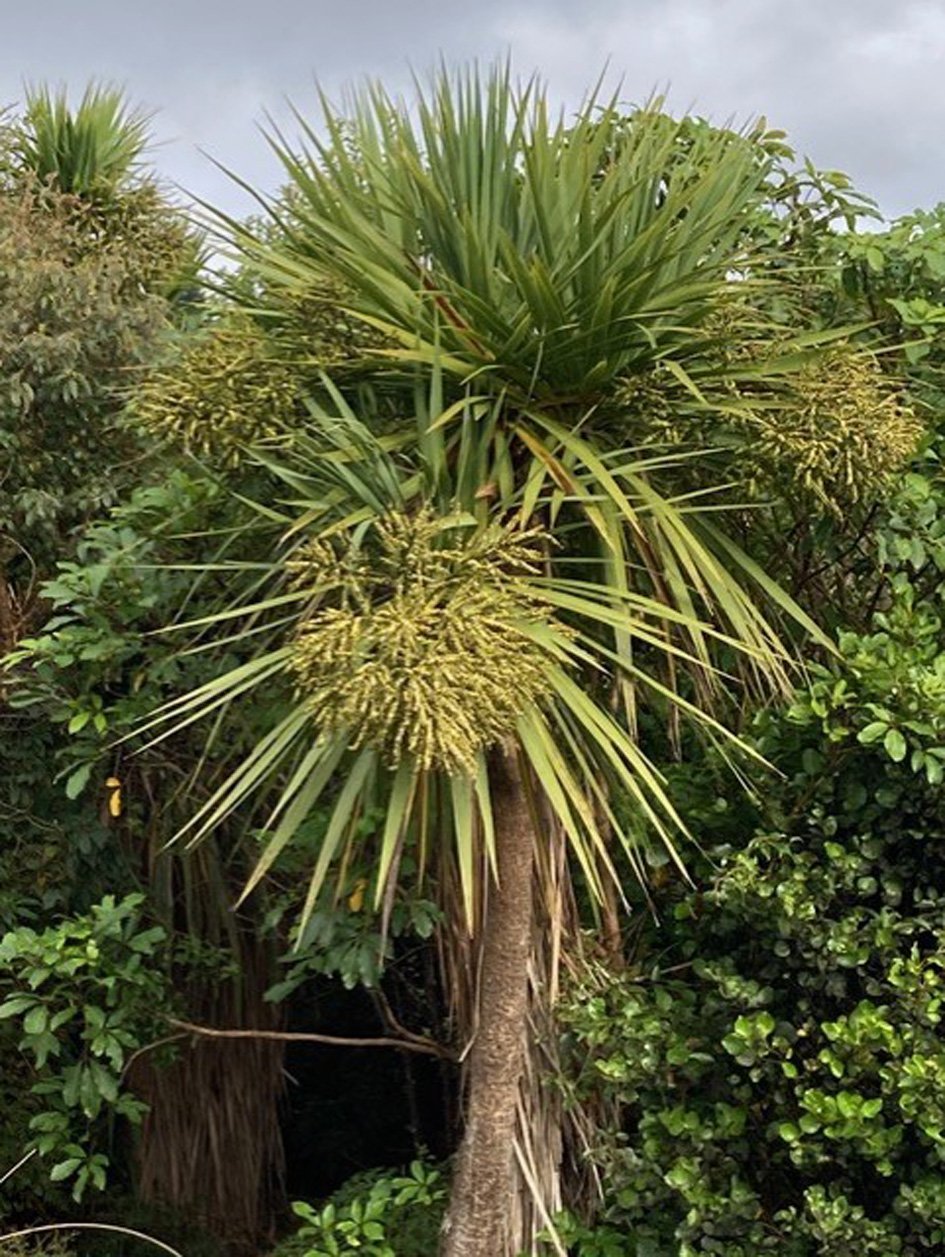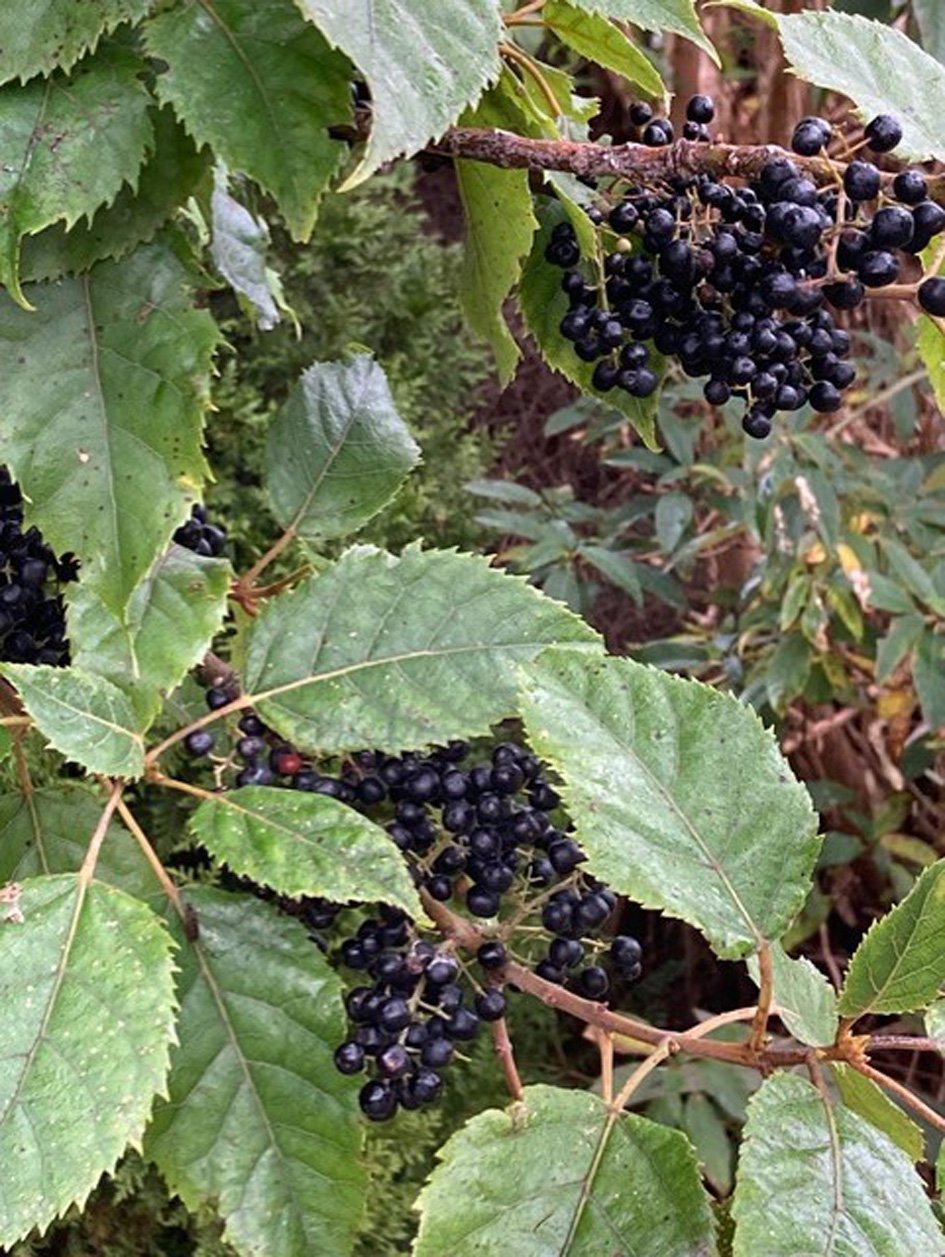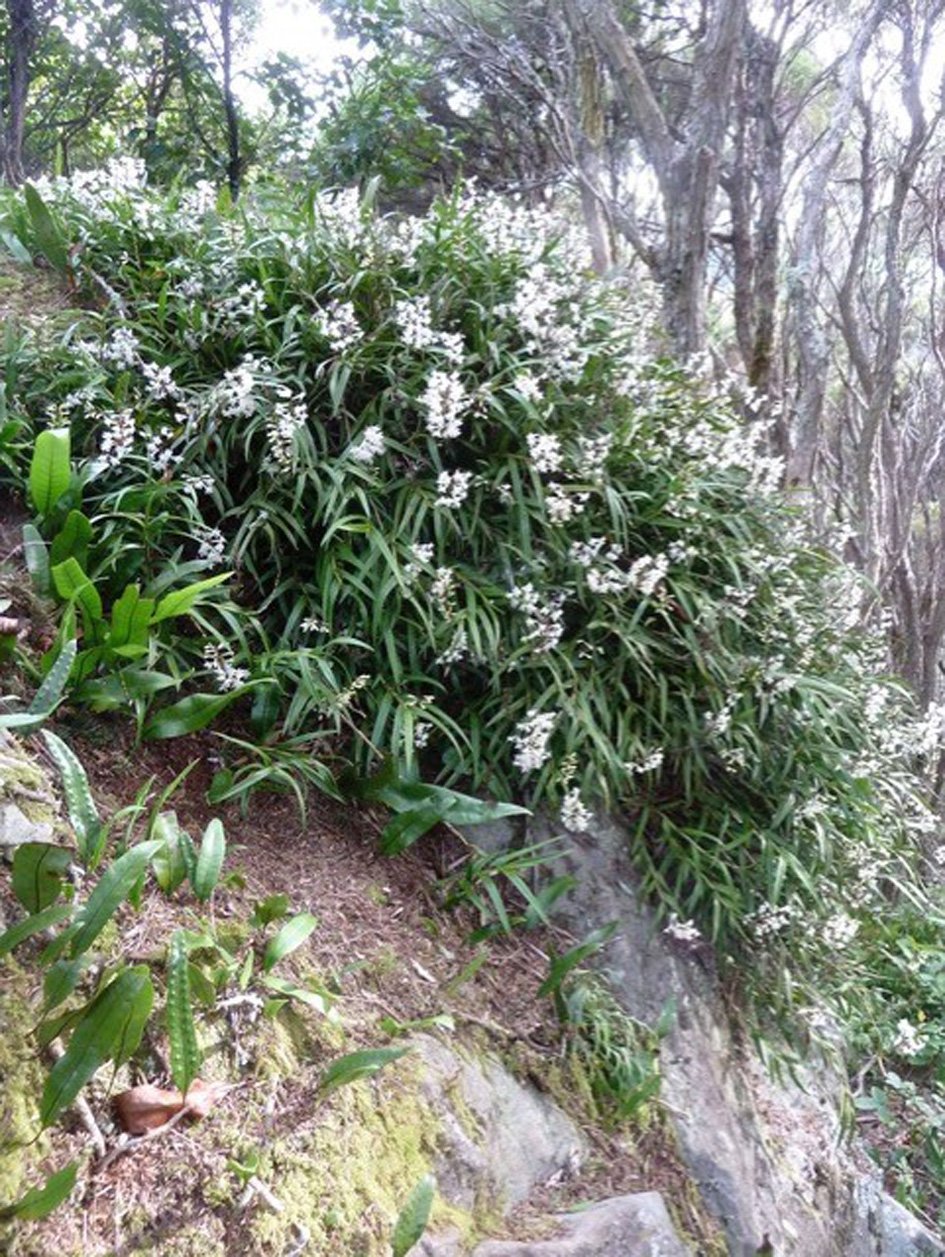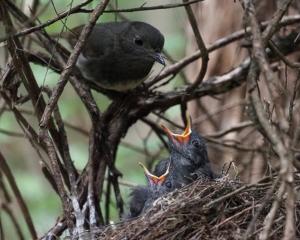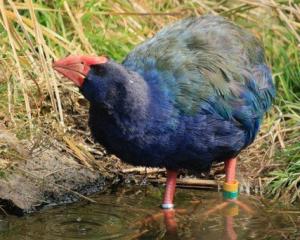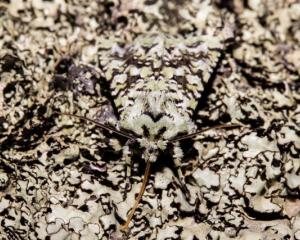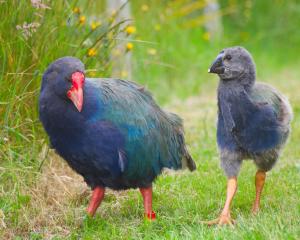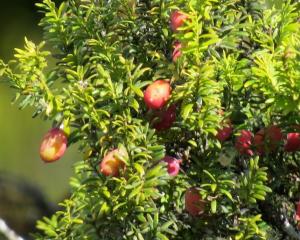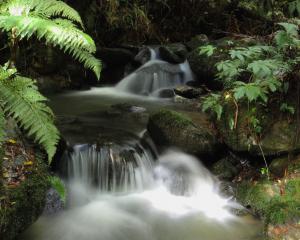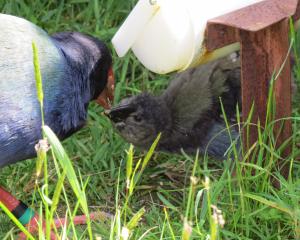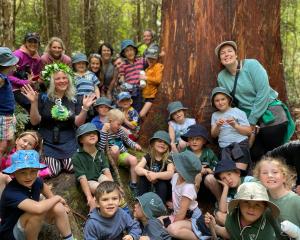Orokonui Ecosanctuary is a place of plenty at this time of year, writes Alyth Grant.
On a still, grey day at Easter a friend and I left our garden labours and took a walk in the ecosanctuary. The mists had dissipated, but the sun was absent too. Yet, what a cheerful place Orokonui seemed to be.
The two takahē parents and their adolescent chicks were pottering around their pond after their 11am snack. One chick was pecking at the lichen growing on the posts of the information panel to see how that might taste, while its mother set off across the grass towards a favourite corner.
An Otago skink tentatively poked its head out from underneath the schist, hoping it might be warm enough for a soak in the sun. Not quite yet, it thought, as it skittered back under.
In the bush every track was loud with birdsong. Having recently listened in vain for bellbirds while travelling down the West Coast, it gladdened my heart. At the aviary young kākā were boisterously tumbling in play in the treetops and calling by to say hello to new arrivals acclimatising in the aviary. Fantails fluttered around, teasing would-be photographers with the impossibility of catching the perfect shot. And whenever we paused to look for fungi a robin would appear beside us or peer down from a tree or rock.
What was the source of all this evidence of joy on such an ordinary day?
Poet John Keats gave us the answer to that in his
Ode to Autumn. Easter brings with it the bounties of autumn that make the bush lush with food and give ample cause to sing. We humans need to look quite carefully, as the fruits of the bush are not so obvious as the peaches and apricots we delight in, but to a bird’s eye they are easily spotted.
The two of us had set out in the hope of finding some of the many colourful fungi that can be found in Orokonui, and the seasonal information posters in the visitor centre made us optimistic. But the season has been dry. Not a patch of mud to be seen, just dry leaf litter on the ground, and the streams were running on empty.
Fungi like moisture and warmth. We had come too soon. We found a few red pouch fungi, and old rotting logs always provide habitat for various types of bracket fungi. But no purples or yellows were to be seen. A strange black one that closely hugged the ground did have us intrigued, however. One for the experts to identify.
On the other hand, the harvest to be had in the trees is abundant, promising a good winter for the birds. While they have already dealt to the fuchsia feast - only a few shrivelled konini were to still to be found - there were berries galore for the searching eyes of kereru and tui, while coprosma bushes offer the skinks a banquet of bluish-white berries. The cabbage trees, (tī kōuka) flowered prolifically this year and their inflorescences are now thick with berries.
The orange fruitfulness of astelia, the green drupes of the lemonwood (tarata), and the rich black berry clusters on the mountain five-finger (orihou) will keep them fed for weeks ahead. From a human perspective, the crop on the wineberry (makomako) at the first turn of the track would have made the hearts of pioneers of yore sing, anticipating the wine they would yield.
For seed-lovers the now flourishing tussocks and toe-toe are pushing skyward, waving their laden seedheads invitingly in the wind. Protein is on hand too. We watched a bellbird that was ignoring the ecosanctuary’s offerings of sugar-water; instead it was moving up and down a tree-trunk as a rifleman does, thrusting its beak in behind the loose bark in search of invertebrates.
So, while we did not find the fungi we were hoping for, we came away satisfied, refreshed and delighted by the richness of Orokonui’s offerings. The fragrant Easter orchid has begun to flower, and before long there will be plenty fungi for young explorers to discover too.
• Alyth Grant has been a volunteer at Orokonui since its inception.
